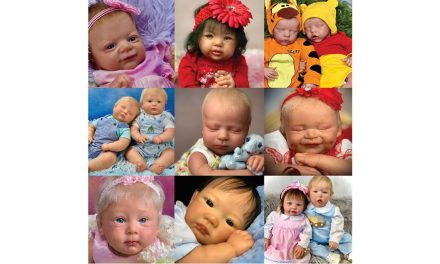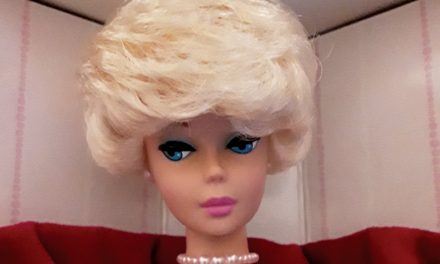By Pam North
When German-born artist Silke Sordyl created her first needle-felted doll in 2014, she was also building a fantasy world for her gnome characters to inhabit. “In my imagination there is a special happy nation of gnomes living in the Earth’s interior. I named them Gieblinge, a German fantasy word that just came up in my mind, and it means to me little people who live in the forest under a big tree with many chambers and hallways inside.
“Their underground empire is surrounded by passageways and caves, and their chambers are beautiful and sparkling like gemstones. The Gieblinge are very friendly, and they like to share everything around them. In my fantasy world they are just perfect, with nothing mean or bad in their minds.”

Sordyl’s creation was inspired by Jakob Streit’s book “Tatatuck’s Journey to Crystal Mountain,” about a small root-pulling gnome who dreams of working in the crystal caves. The head crystal gnome tells Tatatuck that he must journey over seven mountains and bring back a crystal to qualify to be a crystal gnome.
“The stories that I think up for my Gieblinge help me form them. I often get the inspiration for my characters from the people around me, like when my parents or friends tell about their travels, and then I build something into the stories,” Sordyl said.
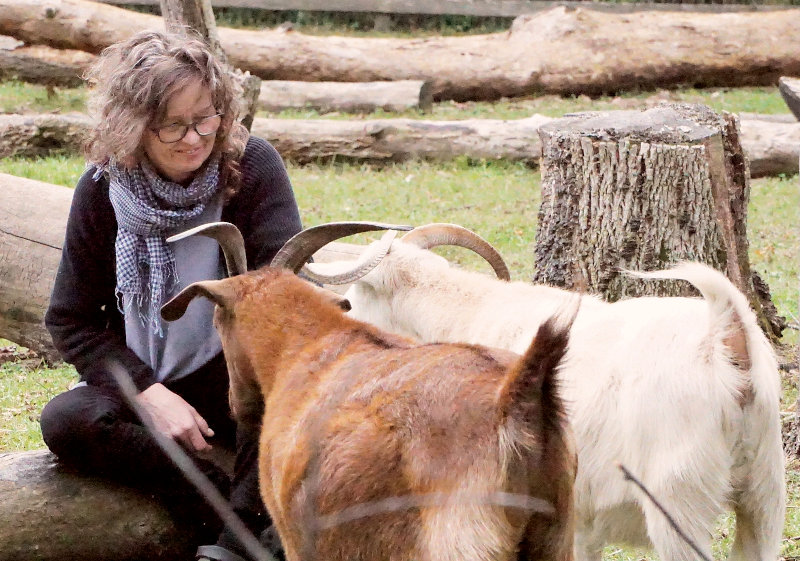
A Lifetime of Crafting
Sordyl was born in North Rhine-Westphalia, a state in Western Germany, and had five younger siblings. “I grew up in a little village, and I had a wonderful childhood,” she recalled. “My grandmother taught me everything from knitting to crocheting lace on napkins, and as a little girl I liked to sew dresses directly on my Barbie dolls. I loved to sew my own clothes, and I did it later for my kids as well. After high school, I learned to be a baker and cake maker. I’ve loved to craft my whole life. I’m not the only artist in our family — my youngest brother is a pretty well-known make-up artist at the Düsseldorf Opera House.”
After Sordyl married and started her own family, she learned needle-felting, the process of transforming wool to dimensional felted shapes using a barbed needle, when her children were in school. In 2012, her husband was offered a job in the United States, so the family moved to Illinois. They now live on a small farm, close to the Wisconsin border.
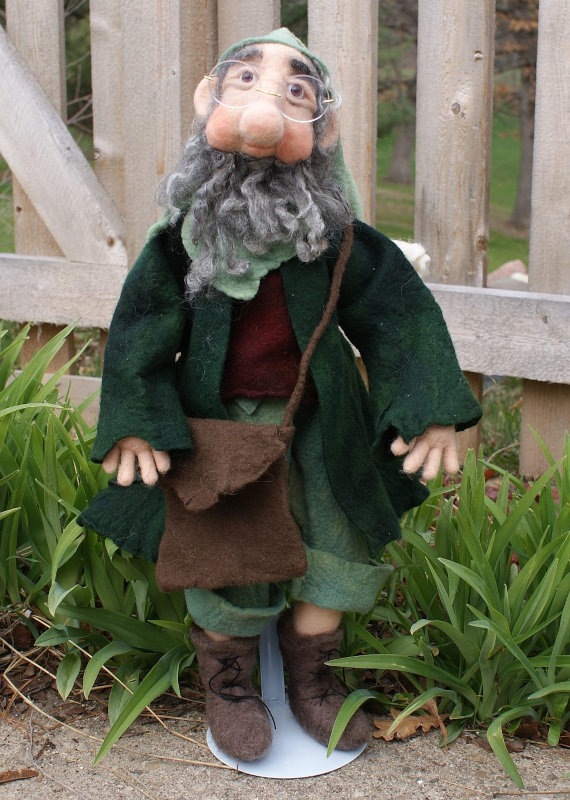
Sordyl taught herself how to needle felt her gnome characters. “It takes time to do it right,” Sordyl said, “but if you are patient enough you will get the hang of it. It’s so much fun to poke the wool until it comes to life. I love fiddling with the wool fibers and thinking about how I can do something; for that I have endless patience.”
“When I start a figure, I have no idea what or who it will be. I just leave that to my feeling of whether the nose is big enough, the mouth is grinning properly, the laugh lines are accented well. It’s all decided during the felting process, done gradually with many very thin layers of wool, and finally the face that I like emerges. I start with an oval, not too tightly felted ball. Then the nose follows, which I only roughly felt and then form on the face in the shape I like. I prefer to use glass eyes. The most important and most beautiful thing is to portray good emotions in the faces.”
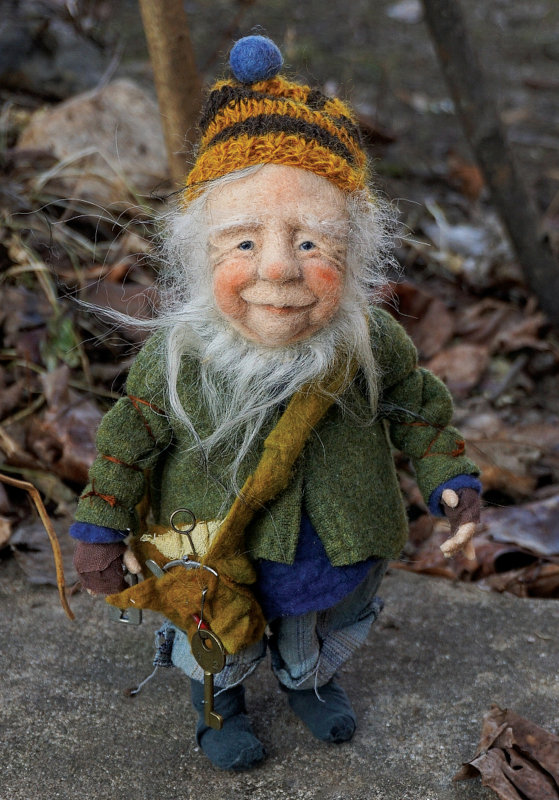
Raising Her Own Raw Materials
By 2015, Sordyl had her own sheep to supply the wool needed to create her winsome characters. “It takes time to process my own wool. I have a shearer who does the hard work, and I wash the wool and bring it to the fiber mill. When I get the carded bats back, I dye it. It took a lot of experimental dyeing until I found the right skin tone for my Gieblinge. I use mainly the wool from my Icelandic sheep; it’s pretty coarse and it felts well.
“I also have Shetland sheep, Teeswater sheep, and 16 cashmere goats. Their fibers are fantastic but way too soft for needle felting. I also have two Pygora goats, two alpacas, and one llama. All my animals are pets — they know their names, and they have a happy, lazy life here with me. With my online classes and the sales from my dolls, I pay for their hay and vet bills. It is particularly nice to work with the wool of my own animals.”
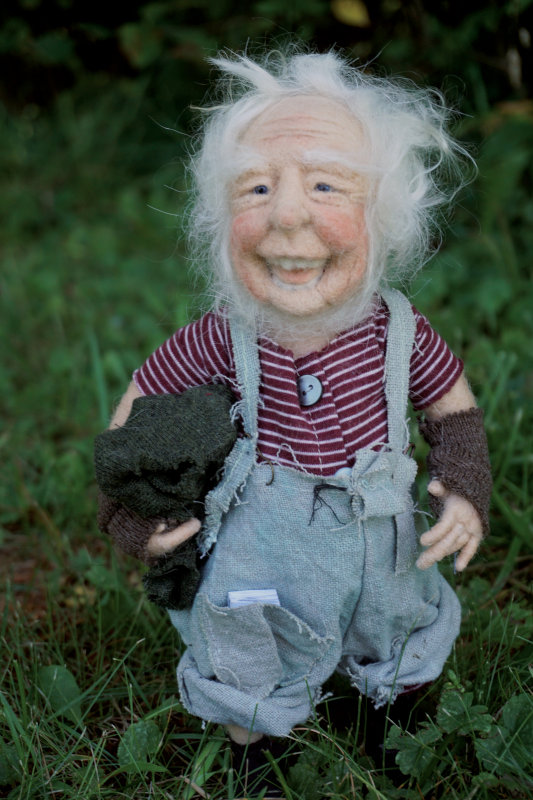
Sordyl’s creations come to life in a small studio in her house. “I’ve given courses in my studio, but in the last years I’ve switched to online courses and Zoom meetings, which work really well,” she said. “My online classes are more like meeting with friends who want to learn what I enjoy teaching most. It’s a lot of fun to show other interested people what is possible with wool.
“Before the pandemic, I sold my characters directly on Facebook, in my Etsy shop, or at various shows. I still have a lot of fun felting faces and making up stories, but a few months ago, I discovered 3D printing for myself. I find ball-jointed dolls particularly fascinating, and my last felted Giebling is a string puppet with a printed body. Who knows what’s coming?”
See more at Silke Sordyl’s Etsy shop and Facebook page



